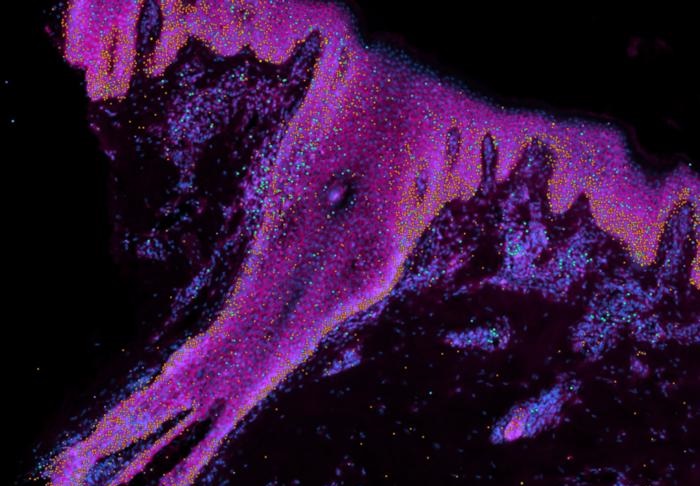First Human Skin Map Could Aid in Regenerative Medicine and Scar Prevention
Researchers from the Wellcome Sanger Institute, Newcastle University, and their collaborators have created a detailed single-cell atlas of prenatal human skin. The study, published today in Nature, provides new insights into how human skin, including hair follicles, forms before birth, with potential applications in regenerative medicine and treatments to prevent scarring.
The research team employed single-cell sequencing and spatial genomics techniques to generate the atlas, allowing them to analyze the development of skin at the cellular level. This work provides a molecular framework, or "recipe," for constructing skin, which could be utilized to create new hair follicles for skin transplants or address conditions such as scarring alopecia.
Skin Organoid Model for Disease Research and Regenerative Applications
In addition to mapping the skin, the researchers developed a skin organoid model—a laboratory-grown "mini organ" of skin with the ability to grow hair. This model was created using adult stem cells and mirrors prenatal skin development more closely than adult skin. This organoid system can be used to study skin diseases and explore potential regenerative treatments.
One of the key findings of the study is the role of immune cells, specifically macrophages, in supporting blood vessel formation within the skin organoid. The team observed that these cells promote vascularization, which is crucial for the development of functional tissue. This discovery could enhance the creation of more complex tissue models and inform clinical approaches to improve healing.
Implications for Scar Prevention and Congenital Skin Diseases
The study also sheds light on the differences between prenatal and adult skin, specifically how macrophages contribute to scarless healing during fetal development. Understanding this process could lead to new clinical techniques to reduce scarring following surgery or injury in adults.
Additionally, the atlas provides a resource for identifying genes linked to congenital skin disorders, such as blistering and scaly skin conditions. The researchers found that genes implicated in these disorders are active during prenatal development, suggesting that these conditions originate in utero. The organoid model potentially offers a new, accurate platform for studying such diseases.

Xenium image of human skin showing stem cells (cyan), keratinocytes (orange), and immune cells (green, purple). Credit: Wellcome Sanger Institute
Part of the Human Cell Atlas Initiative
This work is part of the Human Cell Atlas, an international effort to map every cell type in the human body. By understanding the cellular and molecular processes involved in skin formation, researchers hope to gain a better understanding of skin-related diseases and open new avenues for medical treatments.
Dr. Elena Winheim from the Wellcome Sanger Institute, co-first author of the study, said:
“Our prenatal human skin atlas offers a detailed molecular view of how skin and hair follicles form. This information could support advancements in regenerative medicine, such as developing new skin and hair transplant techniques.”
Dr. Hudaa Gopee from Newcastle University, also a co-first author, added:
“In addition to creating a model of human skin with hair growth, our research reveals how immune cells contribute to tissue development. These findings could improve tissue models and inform new approaches to wound healing.”
Professor Muzlifah Haniffa, co-lead author and Interim Head of Cellular Genetics at the Wellcome Sanger Institute, emphasized the broader scientific potential of the study:
“Our atlas and organoid model provide a valuable resource for the research community. These tools can be used to study skin development, congenital diseases, and regenerative medicine.”
Access to Data
The prenatal human skin atlas is freely available online and can be explored interactively through the Human Cell Atlas portal. Researchers and clinicians can use the atlas to study specific cell types and their roles in both healthy development and disease.
For more information and to explore the data, visit the Human Cell Atlas portal: https://developmental.cellatlas.io/fetal-skin